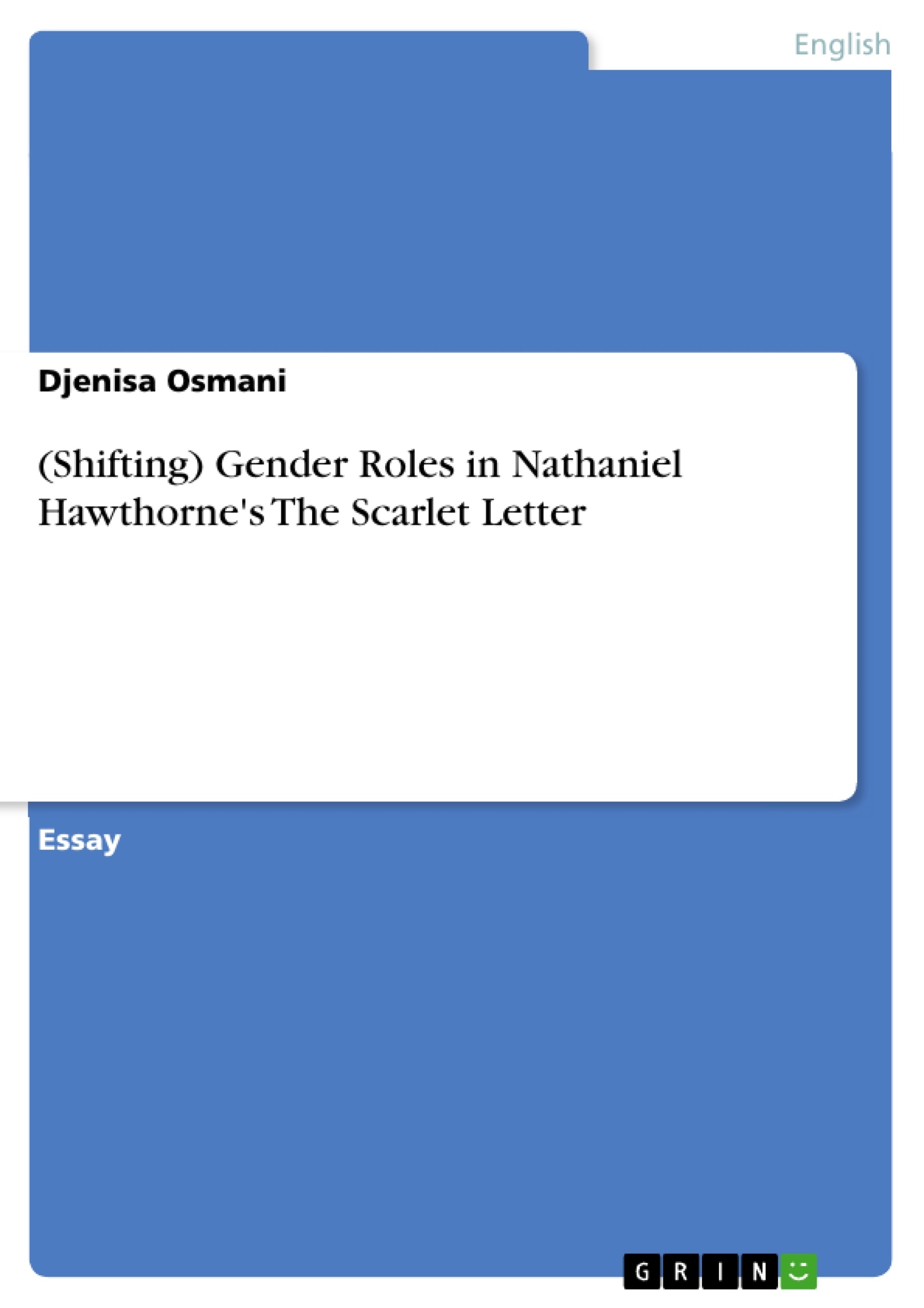In the following, I will first present the individual gender roles of the Puritans and those of the 19th century, demonstrating how they have changed, followed by an account of the feminine gender roles of Hester and her daughter Pearl. Finally, I will briefly present the extent to how the gender roles in the novel are shifted.
The topic of gender roles is an area in society that has been a point of debate for several centuries. Even today, in many parts of the world, gender equality is discussed and fought for. Genders are assigned fixed characteristics and behaviors that are supposed to be followed to conform to society. If someone does not behave according to their gender role, it can very often
lead to conflicts within society, even today. Gender roles are changing, but this is not a new phenomenon.
Nathaniel Hawthorne wrote the novel The Scarlet Letter, which takes place about 200 years before his time. The novel is about a woman who has committed adultery and who has given birth to a child out of marriage. As punishment, she must wear the scarlet letter A at chest height for the rest of her life, a symbol of shame. This circumstance does not sound appropriate
to our times, and even in the 19th century, when Hawthorne wrote the novel, some gender roles of the 17th century were no longer appropriate. The protagonist, Hester Prynne, does not conform to the conventions of her time and emancipates herself from the Puritan gender roles and even ends up not being condemned for it. Furthermore, she and the child’s father - the priest
Arthur Dimmesdale - both demonstrate an exchange of gender roles in their ways of acting and characteristics.
Inhaltsverzeichnis (Table of Contents)
- GENDER ROLES IN PURITANISM AND IN THE 19th CENTURY..
- FEMALE GENDER ROLES IN THE SCARLET LETTER.
- ARTHUR AND HESTER, EXCHANGING THEIR GENDER..
- CONCLUSION
Zielsetzung und Themenschwerpunkte (Objectives and Key Themes)
This text examines the evolution of gender roles in 17th and 19th-century Puritan society, using Nathaniel Hawthorne's "The Scarlet Letter" as a case study. It aims to analyze how Hester Prynne challenges and subverts societal expectations of her time, demonstrating a shift in gender roles.
- The changing role of women in Puritan society
- The impact of adultery and societal punishment on women
- Hester Prynne's defiance of traditional gender roles
- The dynamics of gender roles in "The Scarlet Letter"
- The comparison of 17th-century and 19th-century gender roles
Zusammenfassung der Kapitel (Chapter Summaries)
The text begins by establishing the contrasting gender roles within Puritanism and the 19th century, highlighting the differences in societal expectations for women. It then analyzes how the Puritan ideal of female behavior is challenged by Hester Prynne's actions in "The Scarlet Letter." The author explores how Hester, despite facing societal condemnation, embraces her agency and defies the limitations imposed upon her. The text examines how Hester and Arthur Dimmesdale, through their actions and characteristics, demonstrate a shift in traditional gender roles.
Schlüsselwörter (Keywords)
This work focuses on themes of gender roles, Puritan society, 19th-century societal expectations, female agency, "The Scarlet Letter," Hester Prynne, Arthur Dimmesdale, and the evolving dynamics of masculinity and femininity in a historical context.
- Arbeit zitieren
- Djenisa Osmani (Autor:in), 2021, (Shifting) Gender Roles in Nathaniel Hawthorne's The Scarlet Letter, München, GRIN Verlag, https://www.hausarbeiten.de/document/1159954


